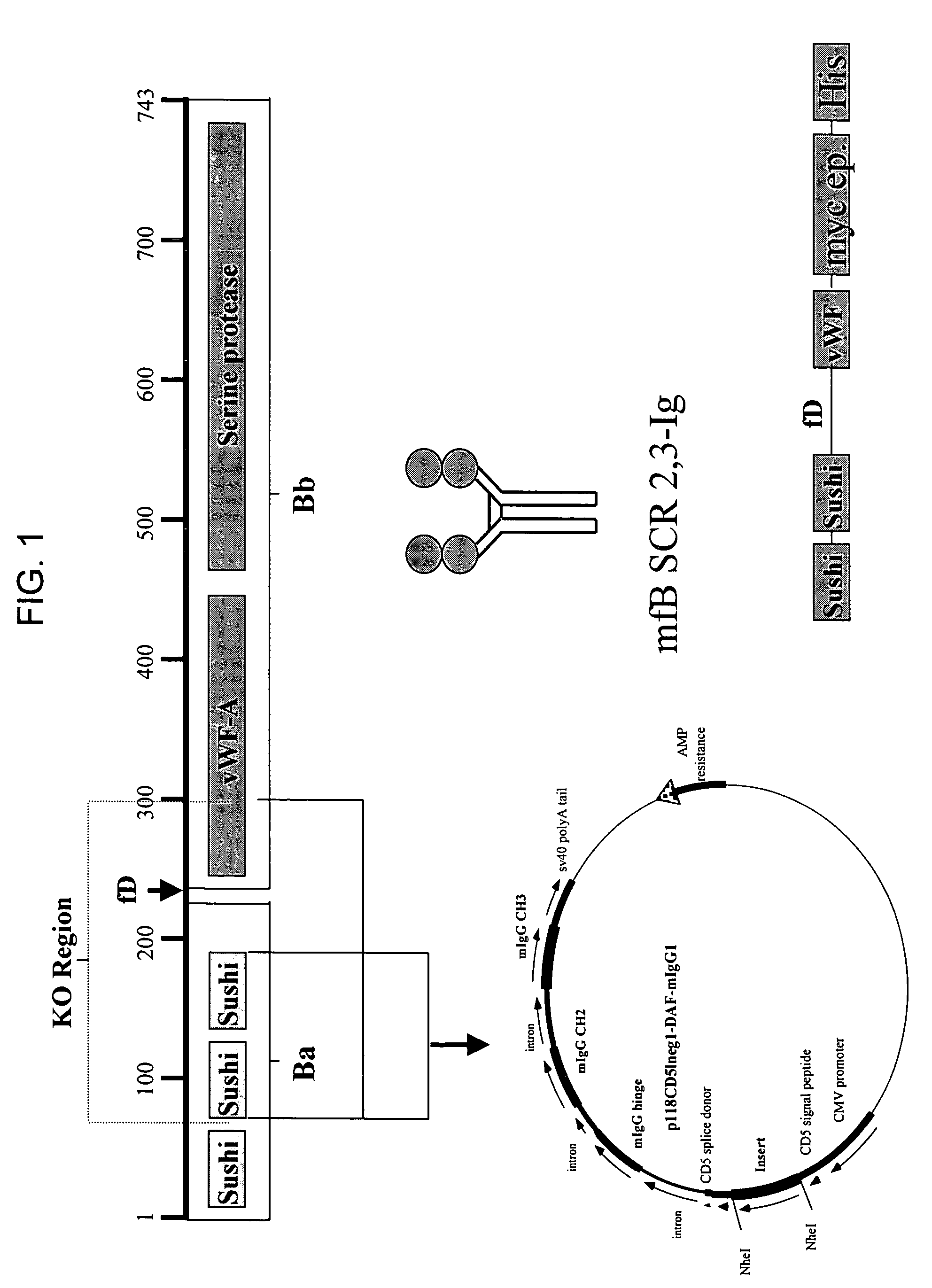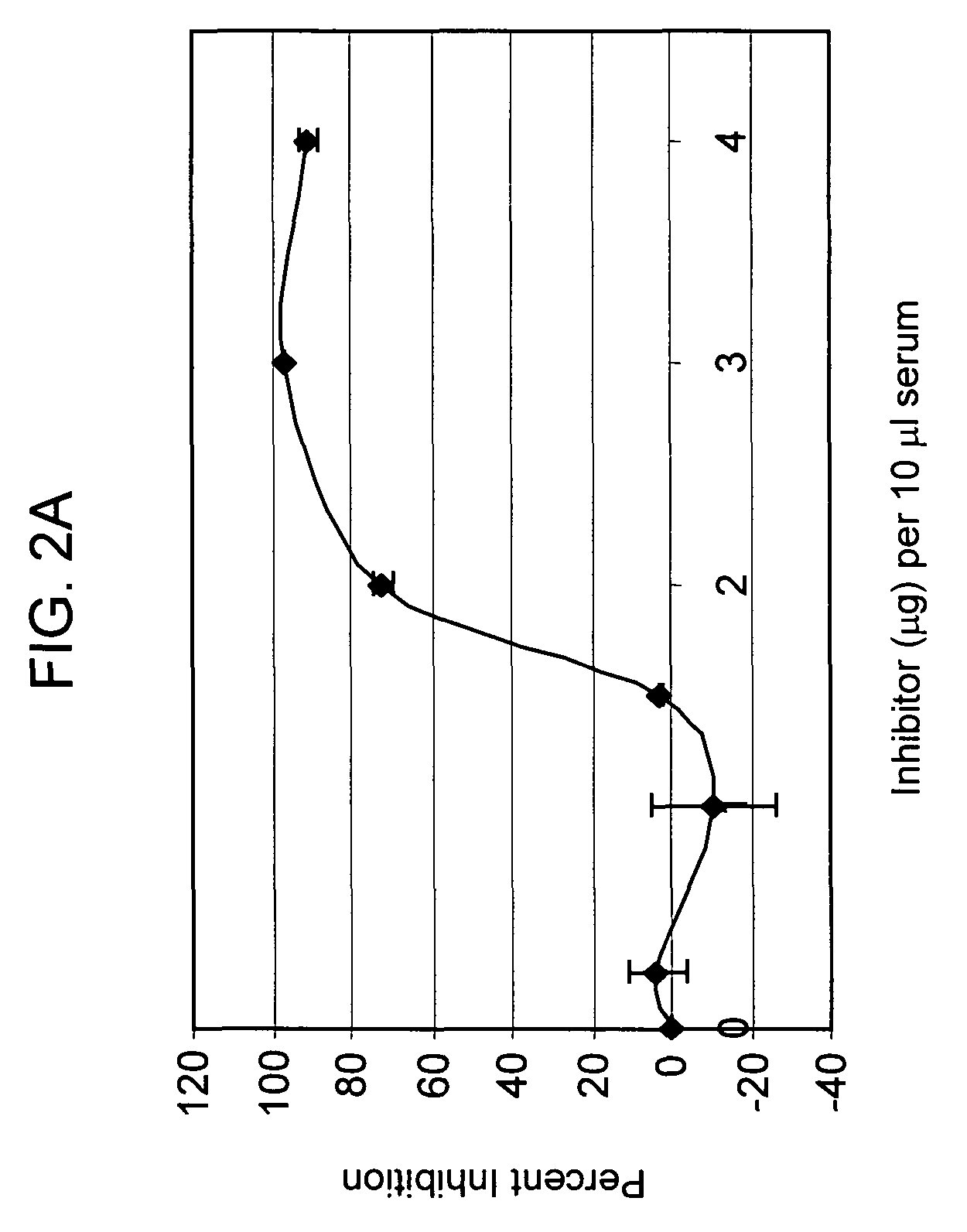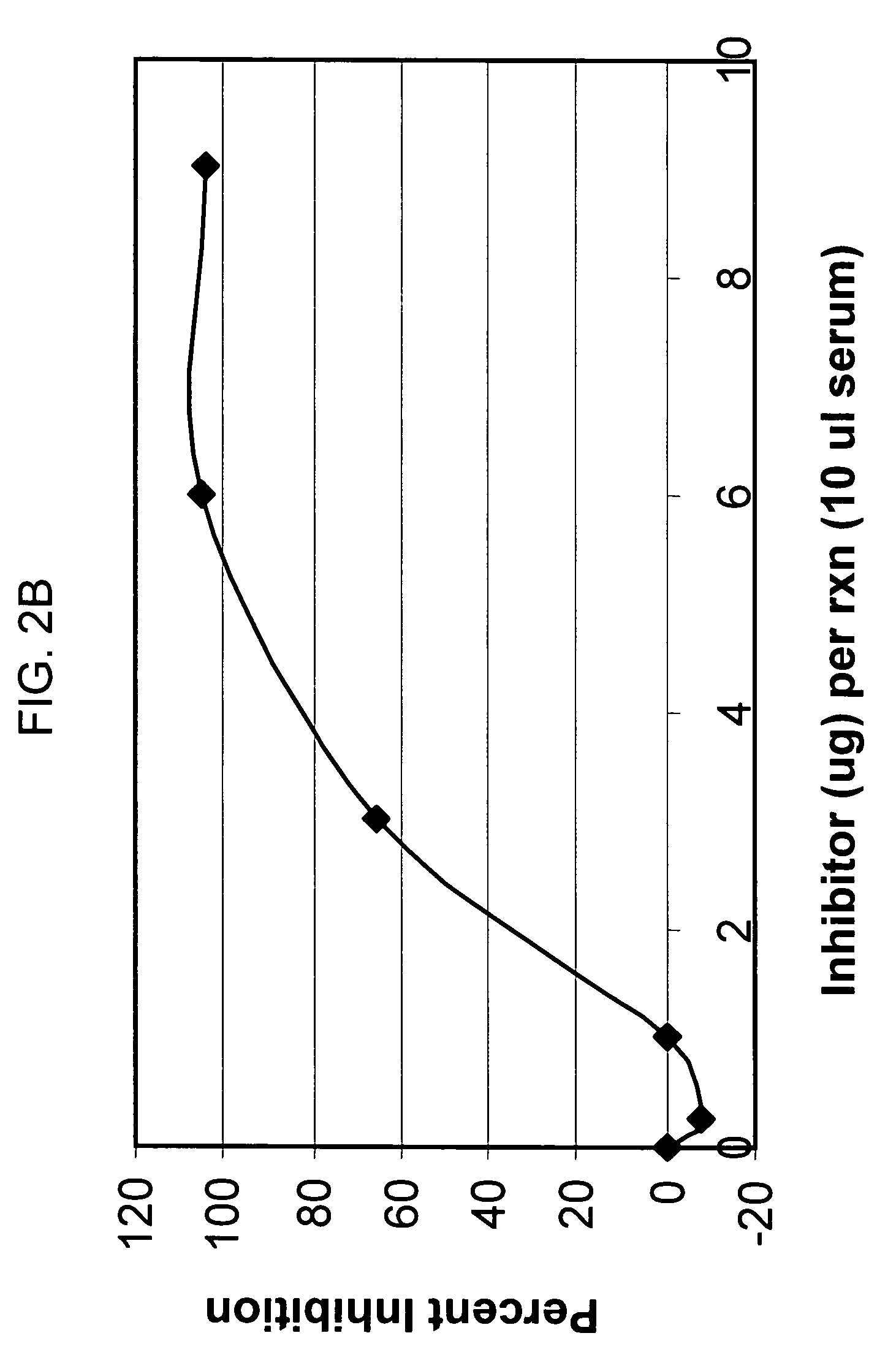Inhibition of the alternative complement pathway for treatment of traumatic brain injury, spinal cord injury and related conditions
a technology of traumatic brain injury and alternative complement, which is applied in the direction of antibody medical ingredients, immunological disorders, metabolism disorders, etc., can solve the deleterious effects of an individual's health that currently have no effective treatment, and the traumatic brain injury, so as to enhance the recovery from tbi and reduce or prevent at least one symptom of physiological damage
- Summary
- Abstract
- Description
- Claims
- Application Information
AI Technical Summary
Benefits of technology
Problems solved by technology
Method used
Image
Examples
example 1
[0136]The following example describes the therapeutic effect of administration of the complement inhibitor, Crry-Ig, on physiological functions after traumatic brain injury (TBI).
[0137]Crry-Ig is a fusion between complement receptor-related protein-y (Crry) and an immunoglobulin Fc molecule. Crry is a functional homologue of human decay-accelerating factor (CD55) and membrane-cofactor protein (CD46) and inhibits C3 complement convertase. Therefore, Crry is an inhibitor of both the classical and alternative complement pathways.
[0138]In a standardized model of closed head injury in mice (Chen et al., J. Neurotrauma 1996), the post-injury systemic administration of 1 mg Crry-Ig, which corresponds to the therapeutic “time window of opportunity” due to a breached blood-brain-barrier from 1-24 h after trauma in this model system, lead to a significantly improved neurological recovery after TBI within 24 h, as opposed to control mice injected with vehicle only (FIG. 6). In this experiment,...
example 2
[0140]The following example demonstrates that Factor B monoclonal antibody reduced brain damage associated with traumatic brain injury (TBI).
[0141]Preliminary titration studies revealed that in vivo, the intraperitoneal (i.p.) injection of 2 mg mAb1379 (factor B monoclonal antibody, or anti-fB) in C57BL / 6 mice weighing 25-35 g resulted in complete inhibition of alternative pathway complement activity, lasting for 48 hours. Anti-fB inhibition studies after experimental closed head injury in C57BL / 6 mice (Chen et al., J. Neurotrauma 1996) were performed using two experimental groups: one receiving 2 mg mAb1379, injected i.p. at t=1 h, 24 h, or 72 h; and the second receiving vehicle medium alone, injected at identical time-points. The results revealed a significant neuroprotective effect of alternative pathway complement inhibition in the anti-fB (mAb1379) group, as compared to vehicle-injected control animals, based on a significantly decreased 10-point Neurological Severity Score (NS...
example 3
[0143]The following example shows that Factor B monoclonal antibody reduced brain damage associated with spinal cord injury (SCI).
[0144]Wild-type female C57BL / 6 mice (Charles River, Md.) and female fB− / − mice, 6-8-weeks old and 16-20 g in weight (for all mice) were used in this study. Animals were provided water and food ad libitum and were housed in ventilated Plexiglas cages (four mouse / per cage) on a 12 / 12-h light-dark cycle with a pathogen-free barrier facility and maintained in accordance with the NIH Guide for the Care and Use of Laboratory Animals of the United States Department of Health and Human Services (National Institutes of Health, Bethesda, Md.). Mice were acclimated for at least 1 week prior to experimentation.
[0145]Animal surgical and postoperative procedures were approved by the Committee on Animal Research at the Medical University of South Carolina. Surgical procedures were carried out under sterile conditions. Spinal cord contusions were performed using a weight...
PUM
| Property | Measurement | Unit |
|---|---|---|
| cerebral perfusion pressure | aaaaa | aaaaa |
| pressure | aaaaa | aaaaa |
| cerebral perfusion pressure | aaaaa | aaaaa |
Abstract
Description
Claims
Application Information
 Login to View More
Login to View More - R&D
- Intellectual Property
- Life Sciences
- Materials
- Tech Scout
- Unparalleled Data Quality
- Higher Quality Content
- 60% Fewer Hallucinations
Browse by: Latest US Patents, China's latest patents, Technical Efficacy Thesaurus, Application Domain, Technology Topic, Popular Technical Reports.
© 2025 PatSnap. All rights reserved.Legal|Privacy policy|Modern Slavery Act Transparency Statement|Sitemap|About US| Contact US: help@patsnap.com



